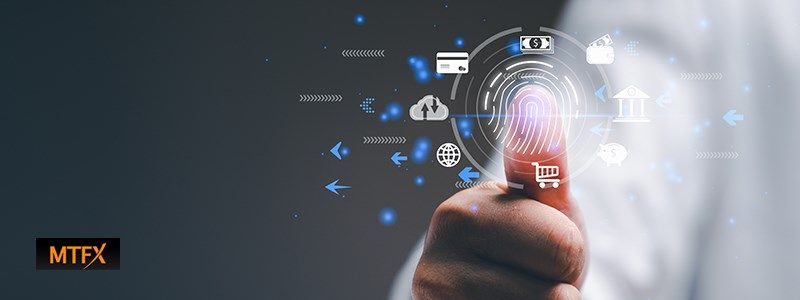5 Important Steps in the Overseas Payment Process
In an overseas payment transaction where you receive money from customers, the process is relatively straightforward. Your customers pay through a variety of methods and portals, and the money shows up in your account.
However, your outbound overseas payments to suppliers, employees, etc., are more complicated. Your payments run a gauntlet of verification, foreign exchange filters, and compliance checks, which slow everything down and add additional costs of doing business.
You can either run that gauntlet on your own, or you can use a payment platform to automate and expedite your cross-border payments. The process includes the following basic steps:
1. The Beginning, or the “Who”
The payer has to collect all the necessary information on the payee or the beneficiary of the payment. That includes the person’s, or the company’s name, how they prefer to receive the funds, and where they are located. That will determine what country and currency in which they will receive the payment.
Then there is the added complication of how different countries identify their banks and what additional information they need as regards members’ accounts. For example, in the US, the payer needs to know the receiver’s bank routing number as well as the account number. Most of Europe, on the other hand, requires a single international bank account number for money transfers.
The good news is that most internationally compatible payment systems account for those differences by altering required submission fields. That is where an automated third-party payment platform can help.
2. Knowing What the Exchange Rate is
Big banks offer an apparent convenience of static foreign exchange rates. Those rates do not account for fluctuations in FX values, and the banks typically apply an inflation factor or “spread.” They make money on the spread, and they conceal those earnings in service and fee charges.
MTFX, on the other hand, updates currency exchange rates in real-time. Users can use the latest exchange rates to approve this stage of the payment before continuing with the transaction.
3. When and Where the Payer Submits the Payment
At this point, the payer is ready to press the “send” button. This last step involves the user’s close check of all the transaction-specific data. The data must include everything the overseas country requires as compliance details necessary for processing the payment.
This step is a summary of the transaction. It itemizes the reasons for the fund transfer—the goods or services being purchased—and it confirms the exact amount of funds required in exchange for the latter.
This review of transaction details represents the tally of charges and must take into account accompanying local taxes and FX exchange rates described above.
4. Why Compliance Checks and Screening are Necessary
This is a screening stage where the host bank or payment provider like MTFX initially receives the payment. The screening includes checks that include region-specific tests, including safeguards against identity fraud, among other protections.
Compliance checks, while varying slightly from country to country, usually include cross-checking transaction information for consistency with existing records as well as verifying the identity of the beneficiary of the payment.
5. The End: The Transaction is Finished
This is the end of the transaction. Funds are paid to the beneficiary’s account.
Not so Fast. There could be an Additional Waiting Period…
Even when the agreed-upon funds arrive in the beneficiary’s account, some countries impose a break in the process before the account holder can actually access the money. Many banks in Asia or Africa, for example, commonly ask for additional proof of a transaction invoice before they execute the final transaction.
Expediting the Process with MTFX
The 5-step process described above can move at a snail’s pace or lightning-fast, depending on whether multiple parties perform the steps manually, or if it is automated and transparent.
For example, if you passively accept bank FX exchange rates as a cost of doing business, you might be paying additional fees if that bank has to outsource its currency exchange services. Service fees and ancillary charges could add as much as 7 percent to your payment.
On the other hand, you can automate and expedite your overseas payments through a payment platform like MTFX. From start to finish your overseas business process can be simplified and unencumbered by high costs, delays, and compliance complications.
To learn more about how our platform does that, contact us. We’ll save you time, money, and headaches and help widen your overseas business footprint.
Popular related articles;
- Best Way to Transfer Money to a Foreign Bank Account
- How to Invoice International clients - Cheaper, Faster and Easier
- Transferring Money Overseas: What You Need to Know
- International Money Transfers to Foreign Countries: What You Need to Know
- The Best Way to Pay your Global Workforce
- Paper Cheques Still Have a Role in the Digital Age--But Not So Much within FX Transactions
- Still Using a Bank for your FX Business - Blog MTFX
To ensure compliance, choose a platform that adheres to global AML and KYC regulations. Automated compliance tools and fraud detection systems can simplify the process and minimize risks.
10. What are the benefits of using a multi-currency account for international payments?
A multi-currency account allows businesses to hold and manage funds in multiple currencies, reducing conversion fees and processing times. It also provides flexibility for transactions with global suppliers and clients.

Keep updated
Make informed decisions
Access tools to help you track, manage, and simplify your global payments.
Currency market updates
Track key currency movements and plan your transfers with confidence.
Create an account today
Start today, and let us take the hassle out of overseas transfers.
